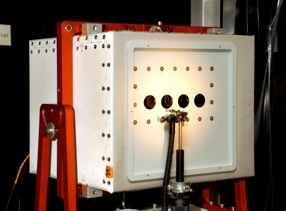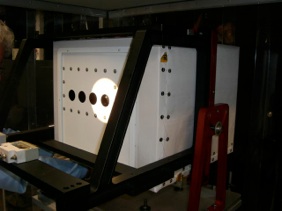I Principle
Let E(λ) the spectral irradiance of a source at wavelength λ at a specific distance between the source and the instrument entrance pupil. In such condition, the instrument generates a signal S(λ).
The response of the instrument is
R(λ) = E(λ)/S(λ)
R(λ) is the instrument spectral irradiance response in W/cm2/nm per count s-1 for UV and visible channels, and in W/cm2/nm per mV for the IR channel.
Consequently, when a source as the sun is measured providing a signal of value S(λ), the solar irradiance is obtained as
E(λ) = R(λ) S(λ)
This assumes the linearity of the detection or S(λ) being corrected for the non linearity.
To perform the absolute calibration, a black body radiator is chosen because as a primary standard source. Furthermore, its irradiance cover most of the domain of interest for SOLSPEC, with exception for wavelength below 200 nm due to the limits of Air-UV. Consequently, a specific bright source in UV is needed. For that purpose, we have chosen a D2 lamp calibrated by the Physikalisch-Technische Bundesanstalt (PTB) to extend the domain of calibration down to about 165 nm.
II The PTB Black Body
II-1 General Descritpion
At the Physikalisch-Technische Bundesanstalt (PTB) BB3200 series black-bodies radiators manufactured by the All-Russian Institute for Optophysical Measurements (VNIIOFI), Moscow are used to realise and maintain fundamental radiometric units by utilizing Planck’ s law. One of these black-bodies, the BB3200pg represents the primary standard for the realization of the spectral irradiance scale [Sperfeld et. al. 1995], [Sperfeld et. al. 1998/01].
BB3200pg is part of the spectral irradiance calibration equipment (SPICE) at the PTB and is also intended to be used by collaborating institutes as a standard radiation source with calculable spectral irradiance [Gröbner et. al. 2005] .























